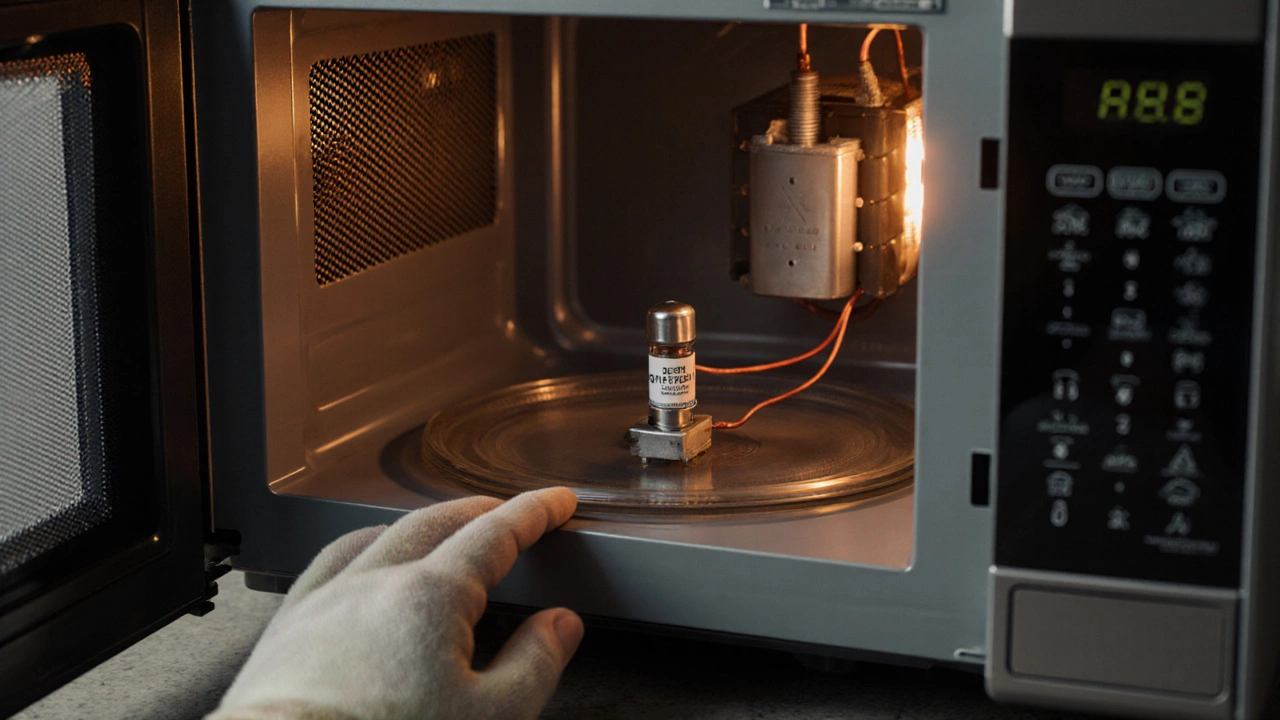Replace Microwave Fuse – What You Need to Know
When working with replace microwave fuse, the process of swapping a blown fuse in a microwave oven to restore power. Also known as microwave fuse replacement, it is a common DIY task for homeowners who want to avoid a service call. You’ll also encounter the microwave, a kitchen appliance that uses a magnetron to generate microwaves for cooking and the fuse, a safety component that interrupts electrical flow when current exceeds safe limits. Knowing how these parts interact is key: the fuse protects the microwave’s high‑voltage transformer and magnetron, so a blown fuse usually means an underlying fault or a simple overload. If your microwave stops heating, the first thing to check is the replace microwave fuse step. But before you start, consider the broader context – electrical safety, practices that prevent shock, fire, and equipment damage is non‑negotiable. This means unplugging the unit, using insulated tools, and confirming the power is off with a multimeter. By treating the fuse as a symptom rather than the cause, you’ll save time and avoid unnecessary replacements.
Key Steps for a Safe Fuse Replacement
First, gather a basic toolbox: a flat‑head screwdriver, a Phillips driver, needle‑nose pliers, and a digital multimeter. The multimeter lets you verify that the fuse is truly open – set it to continuity mode and hear a click if the fuse is good. Next, locate the fuse housing, usually found behind the microwave’s outer cover or inside the control panel. Remove the screws, lift the cover, and spot the glass or ceramic cylinder marked with its amperage rating (commonly 5A or 10A). Take a photo before you pull the old fuse out; this simple visual reference prevents re‑assembly errors. When you insert the new fuse, match the rating exactly – using a higher‑amp fuse defeats the safety function, while a lower‑amp one will trip quickly. After the new fuse is seated, re‑secure the cover and double‑check that no wires are loose. Finally, plug the microwave back in and run a quick test: heat a cup of water for a minute. If the unit powers up and the water warms, the fuse replacement succeeded. If not, you may have an issue with the magnetron, the component that actually generates microwave energy or the door interlock switch, both of which also draw power through the same fuse circuit. In that case, it’s wise to call a certified technician rather than risk further damage.
Understanding the relationship between the fuse, the microwave’s internal circuitry, and safety standards lets you troubleshoot with confidence. The articles below dive deeper into related topics – from diagnosing a faulty door switch to checking the magnetron’s continuity, and even tips on when to call a professional versus attempting a DIY fix. Whether you’re a seasoned handyperson or just starting out, the collection gives you clear, step‑by‑step guidance that builds on the basics covered here. Browse the posts to expand your knowledge, sharpen your repair skills, and keep your kitchen running smoothly without unnecessary service calls.

Microwave Fuse Repair Cost: How Much to Fix a Broken Fuse?
Discover the true cost of fixing a microwave fuse, from part prices to labor fees. Learn DIY steps, safety tips, and when to call a professional for a reliable repair.